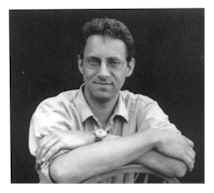The DebeVoice
Southern xposure
 |
By Mary Ann D'Urso
Amelia Boynton Robinson is part Cherokee and part African. She is a tall woman, imposing. Most times she speaks very carefully and very detachedly, quietly, about the dramatic events of the Civil Rights Movement, even about the tear gas she inhaled which has permanently damaged her throat. There is a famous photograph of her on that infamous Bloody Sunday on the Edmund Pettus Bridge in Selma, Alabama in 1965 when state troopers beat civil rights marchers in a fog of tear gas, leaving Boynton unconscious until fellow marchers dragged her to safety.
"I was just spellbound by what she had to say," said Townsend Davis whose non-fiction book, a guided history of the Civil Rights Movement, was just published. Boynton and her husband, Samuel W. Boynton, were involved in civil rights since the 1930s. She was one of more than 100 interviews Townsend conducted for research for "Weary Feet, Rested Souls" (W.W. Norton; $27.50). Boynton, now in her 80s, readily came to mind as Townsend talked about the six-month journey he made beginning in February 1995, traveling the Southern states.
And so did Colonel Stone Johnson, once a laborer for the L&N Railroad in Birmingham, "He's an old-fashioned raconteur. He's got this great raspy voice and he just tells stories endlessly," said Townsend. "I can really picture what it was like to spend the day with them."
The idea for the book started coming "from a frustration of not being able to find civil rights landmarks," said Townsend, explaining that as part of his clerkship with Judge Phyllis Kravitch of the Eleventh Circuit Court of Appeals in Savannah, Georgia, he was required to go to all seats in Florida, Georgia and Alabama to hear arguments. Living in the South, his interest was piqued about the region and its civil rights history.
"My first trip to Birmingham, I went up to the clerk at the front desk of the hotel and asked, 'Where's the church where the horrible bombing happened where four girls were killed.' He didn't know. Then I went to a bookstore and not only weren't there books, but the people in the bookstore said, 'We're not sure where that is." There were other trips to other places and other similar experiences.
In 1993, Townsend made a trip to Selma that pretty much cinched his wanting to do the book. "There were sources there and physical structures, but there wasn't anything describing the civil rights history of this landscape." So he put together a proposal, bit by bit. In late 1994, "I got an offer from Norton to do it for real." Beginning in 1995, he spent six months on the road and six months writing and researching.
Many of his sources came from other books on the Movement, but more often than not, he said, he would go to a gas station, drugstore or church. "Sunday was the heaviest working day for me," he said, explaining that he would "stay long enough in church for an elderly woman to take pity on me -- see who I was and drag me to church teas and suppers. " There are about 350 sites noted in his book, and most are still there. Townsend said the city of Selma was the most evocative for him because it has everything -- a dramatic bridge that serves as gateway to the town, a church where Martin Luther King spoke for the first time, the jail where he was held. "It's all exactly the same," he said.
Twenty-four communities are featured in the book which was done in a newspaper style, said Townsend who, during college, was a reporter for the Charlotte Observer. Later, he also wrote for the San Diego bureau of The Los Angeles Times. For "Weary Feet, Rested Souls," he immersed himself in the vast collection of audio recordings of Birmingham meetings, paying attention to "the way people spoke, listening to the things that were important to them." He also spent time plotting significant sites on city maps which were then converted to finished form by a cartographer in Queens.
"I got the impression that most of the Movement people had not talked about it in a long time," he said. "These were the inspired years for them. They had a cause, something to fight for, and yet there's no mention of many of them. Their individual contributions were not recorded. I was often very inspired by what they said. It kept me going."
~
Originally Published: February 1998
The DebeVoice

